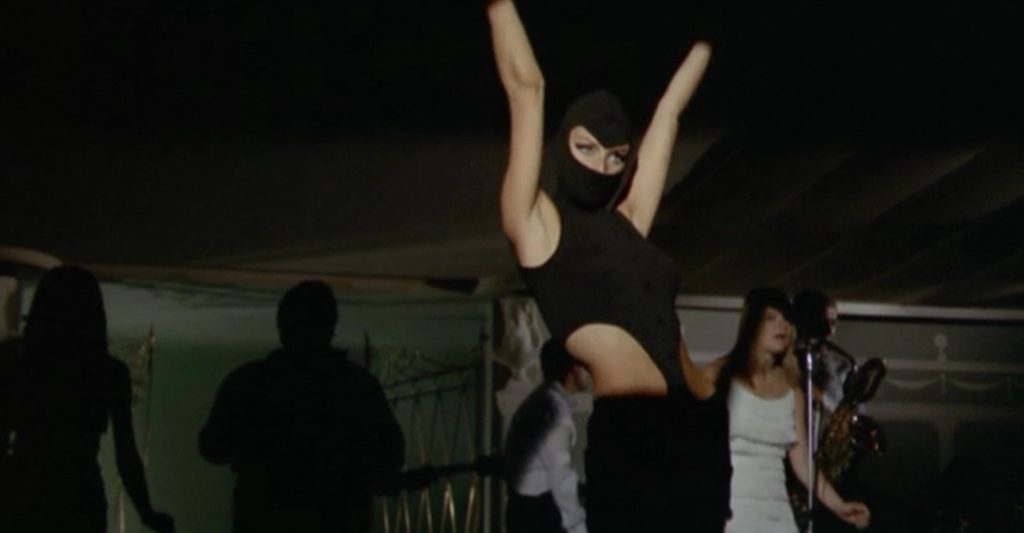
A lot of noise is made about the upcoming film adaptation of a comic book today. Comics and movies, having always shared many aesthetic qualities, seem to have entered into an intensely symbiotic relationship. The comics want to be more like their film adaptations, and the film adaptations strive to be more like their source material. The resounding success of the Disney/Marvel films has taken comic book culture from the peripheries of the “pop” world and thrust it into the mainstream. In short, it’s cool to like comic books today.
The blockbuster comic book movie, DC/Warner Bros. or Marvel/Disney, tends to be a pretty uninteresting affair. Filmmakers, again and again, throw out the dynamic, highly expressionistic image complexes of comic book panels in favor of the more familiar tropes of the “action spectacle”. Why doesn’t anyone really care to imagine the cinematic possibilities of adapting Jim Steranko or latter day Jack Kirby illustrations into moving images? Clearly the appeal of comic books isn’t predicated on the art and design of the page. Filmmakers and audiences prefer to privilege the characters of these books. And, as beloved as these characters often are, a tremendous amount of their appeal and meaning is lost or forfeited when translated into a cinematic product as graceful and inventive as a Rambo sequel.
There are, however, films that adapt or draw upon comic books that do priviledge the art and design of the medium. That isn’t to say that this reversal in priorities is always a good thing. One can easily go too far in this direction (Sin City and The Spirit) to the point that the narrative content suffers for the sake of style.
The best adaptations employ a degree of innovation within their process. Warren Beatty’s Dick Tracy (1990) takes a very literal approach in adapting Chester Gould’s comic strip. The look of the villains, the colors of the set pieces and costumes reach a degree of plasticity that is uncommon in American blockbusters, and owes more than a little to television’s Batman of the sixties. Beatty and cinematographer Vittorio Storaro are able to turn this “literalism” into innovation largely due to the design of shots as well as the effective editing strategies (these recall the Warner Bros. gangster films of the thirties). By masking the plastic world of Dick Tracy in a consistent atmosphere the film itself becomes coherent. A lesser visual stylistic would falter and expose the artifice and absurdity of Beatty’s approach, rendering the overall visual complex as too rediculous to ever be taken seriously by an audience.
Piero Vivarelli is equally as successful as Beatty in his adaptation of Max Bunker and Mangus’ Satanik. Vivarelli is not as literal in his translation of Mangus’ illustrations as Beatty was of Gould’s. Instead Vivarelli turns back on cinema itself to supplement the visual stylization of Satanik (1968). By drawing references to aesthetically similar images between the cinema and Mangus’ illustrations Vivarelli is able to imbue his film with a rich sense of the fantastique. Vivarelli’s choice reference points in the cinema are very clearly Louis Feuillade’s Les Vampires (1915-16) and Fantomas (1913). Vivarelli goes even further and draws upon the early James Bond films for their campy humor and mod hipness. This variety of visual cues and associations are what sets Satanik apart from similar “sex” films of the time such as Barbarella and Modesty Blaise (both adapted from comics) and laid the ground work for later comic book adaptations such as Tim Burton’s Batman (1989).
Roger Vadim’s Barbarella (1968), Corrado Farina’s Baba Yaga (1973), and Joseph Losey’s Modesty Blaise (1966) are all fairly faithful adaptations of their source material. Though neither can boast the kind of innovations that make Satanik and Dick Tracy so compelling, all three films accurately translate a number of the visuals from their source material into the design of the film. The fact that not all of the cinematographic elements of these films are honed in on the source material is what keeps them grouped within that sixties/seventies sub genre of campy sex films.
Some of the best adaptations of comics aren’t even based on comics at all. These are films that appropriate the design and framing elements, along with a serialized structure to narrative, of comics into their cinematic design. William Klein’s Mr. Freedom (1968) is perhaps one of the greatest comic book films of all time simply on the merits of how exactly the film replicates the mood and tone, albeit satirically, of the comics of the day. The same could easily be said of Richard Elfman’s The Forbidden Zone (1980) or Nick Zedd’s Geek Maggot Bingo (1983). All three of these comic book styled films share a sense of “moment”. Obviously these films are drawing more on underground comics than they are superhero comics, but that is precisely what linked them to the zietgeist. In these films there is not just the style of comics, but the sense of relevancy and urgency that comes with interesting, if not always successful, works of art.
The lack of cinematic innovation amongst the major studios is what is at the heart of the aesthetic bankruptcy of comic book movies today. Warner Bros. couldn’t even get Superman right. In the nineties it was safe to say that if a film really botched an adaptation of a comic, then at least their would be the cartoon (particularly Bruce Timm’s work with Batman and Superman during that period). But even animation isn’t a safe bet today. Which is why it is important to revisit those films that actually succeeded in bringing a comic book to the screen in an interesting way.
